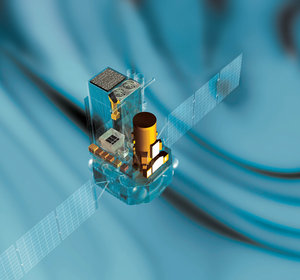The journey
Integral circles Earth in a highly elliptical orbit once every three days. It spends most of its time higher than 60 000 kilometres – well outside Earth's radiation belts – to avoid the background radiation effects which would interfere with the measurement of gamma rays.
Integral was launched by a Proton rocket, Russia's largest operational launch vehicle, on 17 October 2002 from the Baikonur Cosmodrome in Kazakhstan. A powerful launcher was absolutely essential to put the heavy spacecraft into an unusually high Earth orbit which is crucial for the scientific success of the mission.

The Proton used three booster stages to place the spacecraft into a low ‘parking’ orbit. The Proton upper stage put the satellite into a highly eccentric 'transfer' orbit. Then Integral's own propulsion system brought the spacecraft to its operational 72-hour orbit.
In the first five years of operations, its lowest point was 9000 kilometres (growing to 13 000 kilometres after five years) and its highest point was 153 000 kilometres. In addition to the orbit shape, the inclination (the angle compared with Earth's equator) also changed drastically during the five years.
The high and eccentric orbit guarantees long periods of uninterrupted observation with nearly constant background and away from trapped radiation in the Earth's proton and electron belts. In this way, scientists can use more than 80% of the time spent in the orbit for scientific observations above an altitude of 60 000 kilometres.
The orbital period of 72 hours is a multiple of 24 hours which guarantees an optimal coverage pattern from the ground stations. This coverage is continuous for Integral's orbit for all revolutions and allows repetitive working shifts on the ground.















 Germany
Germany
 Austria
Austria
 Belgium
Belgium
 Denmark
Denmark
 Spain
Spain
 Estonia
Estonia
 Finland
Finland
 France
France
 Greece
Greece
 Hungary
Hungary
 Ireland
Ireland
 Italy
Italy
 Luxembourg
Luxembourg
 Norway
Norway
 The Netherlands
The Netherlands
 Poland
Poland
 Portugal
Portugal
 Czechia
Czechia
 Romania
Romania
 United Kingdom
United Kingdom
 Slovenia
Slovenia
 Sweden
Sweden
 Switzerland
Switzerland





























